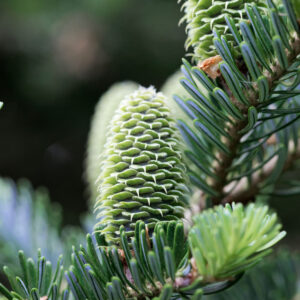Description
This plant is restricted for shipment to CA , OR
Latin Name: Quercus rubra
Common Names: Northern Red Oak, Eastern Red Oak, Gray Oak
Hardiness Zones: 4-9
Mature Height/Spread: Typically reaches 50-90 feet (15-27 meters) in height. This tree grows rapidly and has a long lifespan under optimal conditions, with potential growth of 15-20 feet in just 10 years. It features a broad, often irregular crown.
Soil / Climate: Commonly found in the northeastern and north-central U.S., the Red Oak is relatively easy to transplant. It thrives in slightly acidic soils but is adaptable to a variety of soil types, including loamy, moist, sandy, well-drained, and clay soils. It is also tolerant of urban pollution. This oak prefers fertile, well-drained soils and full sun exposure.
Notes: The bark is light brown to reddish brown, with younger stems displaying more reddish hues. Young trees have smooth bark, which develops ridges with age. The leaves are dark, shiny green on top and grayish white underneath, with 7-11 pointed lobes. They are 5-8 inches (12-20 cm) long and turn red in the fall. In spring, the tree produces inconspicuous flowers in catkins; male catkins are greenish-yellow and 2-4 inches (5-10 cm) long, while female catkins are short spikes. The acorns are round, nearly 1 inch long, with a flat, thick, saucer-like cap, and are typically found singly or in pairs. They mature in early fall. Red Oaks generally start producing a significant number of acorns around 40 years of age. They are favored by lumbermen and landscapers for their large, single trunk and upright, spreading branches.
Problems: The Red Oak is susceptible to oak wilt and may also experience chlorosis if grown in soils that are less acidic than preferred.
Wildlife: Acorns are highly favored by blue jays, wild turkeys, squirrels, small rodents, white-tailed deer, raccoons, and black bears. Deer also browse the buds and twigs during winter.
Cold Stream Farm supplies Red Oak trees which are grown as bare root seedlings and transplants and sold both wholesale and retail with no minimum order.
Sources:
Additional information on Quercus rubra can be found on the link: USDA / NRCS PLANTS Database.







Reviews
There are no reviews yet.